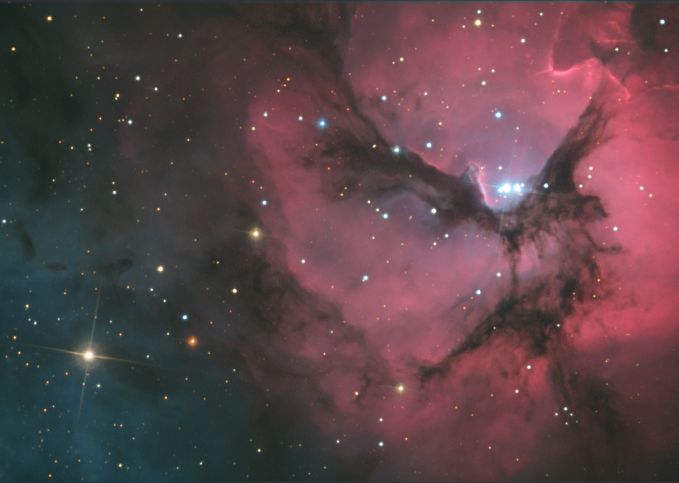SEPTEMBER 1, 2003
A Beautiful Trifid
EXPLANATION
The beautiful Trifid Nebula (aka M20), a photogenic study in cosmic contrasts, lies about 5,000 light-years away toward the nebula rich constellation Sagittarius. A star forming region in the plane of our galaxy, the Trifid alone illustrates three basic types of astronomical nebulae; red emission nebulae dominated by light from hydrogen atoms, blue reflection nebulae produced by dust reflecting starlight, and dark absorption nebulae where dense dust clouds appear in silhouette. The bright emission nebula on the right, separated into three parts by obscuring dust lanes, lends the nebula its popular name. Many details are apparent in this gorgeous high-resolution image of the Trifid. For example, light-year long pillars and jets sculpted by newborn stars—visible here in the upper right-hand corner of the emission nebula—appear in Hubble Space Telescope close-up images of the region.
Credit & Copyright
Jim and Janet Castano, Adam Block, NOAO, AURA, NSF


